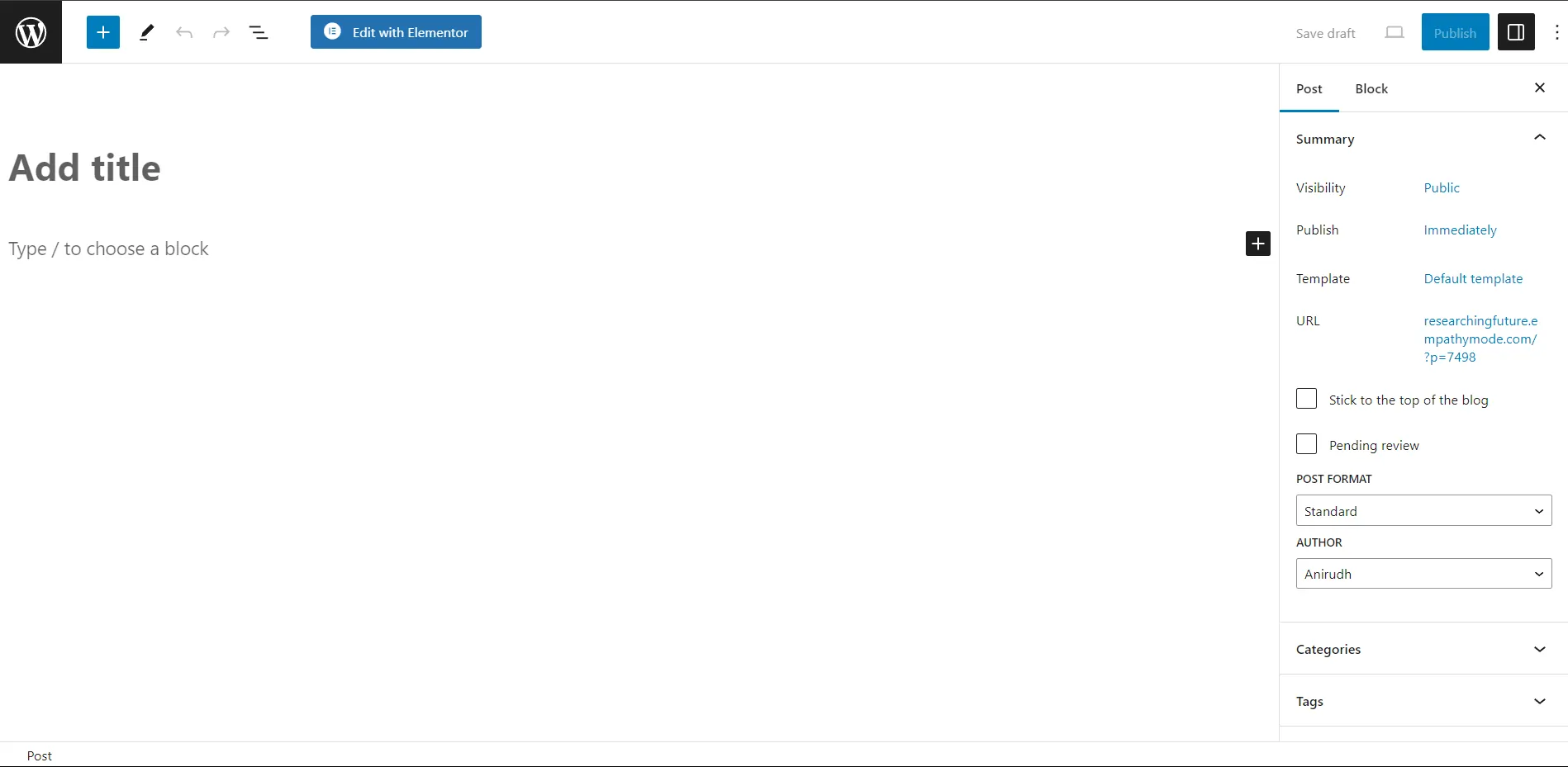As a developer, the choice of the right editor can make or break your experience as a developer. Among the variety of options available, Gutenberg vs Elementor stand out as two prominent contenders. While both editors aim to ease the content creation process, they differ significantly in their approach, functionality, and user experience. Today, we’ll look at the workings of Gutenberg and Elementor, including their capabilities, benefits, drawbacks, and broader implications for web developers.
Discovering about Gutenberg Editor
Introduction to Gutenberg
Before diving into technicality, let’s look into some history of Gutenberg. Editor was named after Johannes Gutenberg, the inventor of the printing press, and serves as WordPress’ official block-based editor. It was introduced in WordPress 5.0 as a significant departure from the original TinyMCE editor. Gutenberg transforms content creation by breaking it down into individual blocks, giving users greater flexibility and control over their layouts. It is also known as a block editor due to its speciality.
Features of Gutenberg editor
Being the default editor of WordPress, Gutenberg constantly upgrades with updates. Some of plus points of using Gutenberg are:
- Block-Based Editing: Gutenberg embraces a block-based approach where each piece of content, be it text, image, video, or embed, is treated as a separate block.
- Simplicity: Gutenberg boasts a simple and intuitive interface, making it easy for both beginners and experienced users to navigate and create content.
- Integration: Being an integral part of the WordPress core, Gutenberg seamlessly integrates with various WordPress themes and plugins.
- Accessibility: Gutenberg prioritizes accessibility, ensuring that users with disabilities can interact with the editor effectively.
- Security: As part of the WordPress core, Gutenberg receives regular security updates, enhancing the overall security of the platform.

Getting to know Elementor Editor
Introduction to Elementor
Elementor is an innovative drag-and-drop page builder plugin for WordPress, was founded in 2016. It enables users to create visually appealing websites without requiring any technical experience. Elementor’s large widget and template collection provides unrivalled design freedom and customization choices.
Features of Elementor
- Drag-and-Drop Interface: Elementor’s intuitive drag-and-drop interface allows users to create complex layouts effortlessly.
- Template Library: Elementor provides a vast collection of pre-designed templates and blocks, enabling users to kickstart their projects with ease.
- Customization Options: From typography and colors to advanced animations and effects, Elementor offers extensive customization options to tailor designs to specific preferences.
- Responsive Design: Elementor ensures that websites created with the editor are fully responsive and optimized for various devices.
- Third-Party Integrations: Elementor seamlessly integrates with popular WordPress plugins and services, expanding its functionality and versatility.

Gutenberg vs Elementor: Pros and Cons
In the end, the choice between Gutenberg vs Elementor comes down to personal tastes, project requirements, and platform familiarity. Gutenberg shines as the default choice for WordPress users looking for a straightforward and integrated editing experience, whereas Elementor appeals to users who want substantial design customization and flexibility. Regardless of the choice, both editors have a significant impact on the future of web design and content development, allowing users to express their creativity and create immersive online experiences.
Pros and Cons of Gutenberg
Pros:
- Simplified editing experience
- Seamless integration with WordPress
- Regular updates and improvements
- Accessibility-focused design
Cons:
- Limited design customization options
- Steep learning curve for complex layouts
- Lack of advanced features for power users
Pros and Cons of Elementor
Pros:
- Extensive design customization capabilities
- Rich library of templates and widgets
- Intuitive drag-and-drop interface
- Seamless integration with WordPress ecosystem
Cons:
- Overwhelming for beginners
- Performance issues with complex designs
- Dependency on third-party plugins for certain features
Statistical Insights between Gutenberg vs Elementor
Usage and Popularity
- According to BuiltWith, as of January 2024, Elementor was used by over 8 million websites globally, making it one of the most popular page builder plugins for WordPress.
- Gutenberg, as part of the WordPress core, is automatically installed into WordPress installations. As of January 2024, WordPress powers more over 40% of all websites on the internet, indicating a sizable user base for Gutenberg.
Accessibility and Security Features
- Both Gutenberg and Elementor prioritize accessibility in their design, ensuring that users with disabilities can create and consume content effectively.
- Regarding security, both editors benefit from the robust security measures implemented by WordPress core, including regular security updates and patches.
As technology advances, the editors will likely undergo more modifications and adjustments, ushering in new opportunities and innovations in the field of web development. Whether you choose Gutenberg’s simplicity or Elementor’s diversity, the route to creating fascinating digital experiences is an exciting undertaking limited only by imagination and innovation.
Please share your thoughts and insights in the comments. At The Product Recap, we are open to friendly suggestions and helpful input to keep awareness at its peak.




